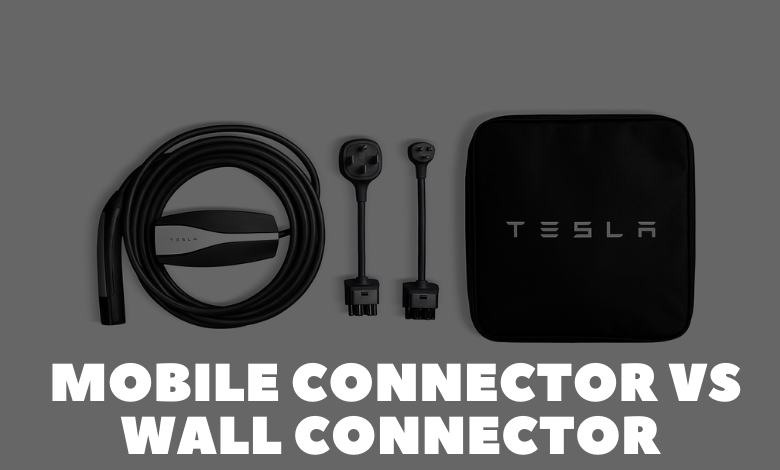Tesla Mobile Connector vs Wall Connector

As a Tesla technician with years of experience, I’ve witnessed firsthand the evolution of Tesla’s charging technology, particularly in the realm of the Tesla Mobile Connector and Wall Connector. In this detailed comparison, we’ll delve into the key features, pros and cons, user experiences, cost analysis, suitability for different users, safety features, future developments, and expert recommendations for these two charging options.
Power Supply and Charging Speed
The Tesla Mobile Connector is renowned for its versatility, supporting a range of power supplies. However, it generally offers slower charging speeds compared to the Wall Connector. On the other hand, the Wall Connector is specifically designed for high-speed charging, making it ideal for home use, with the capability to fully charge a Tesla overnight.
Installation and Setup
In terms of installation and setup, the Mobile Connector is plug-and-play, requiring no professional installation. Conversely, the Wall Connector necessitates professional installation, which includes wiring and mounting, thereby adding to the initial cost but providing a dedicated and efficient charging solution.
Portability and Flexibility
The Mobile Connector’s portability is its standout feature, allowing users to charge from various power outlets, making it perfect for those who frequently travel or need flexibility in charging locations. On the other hand, while the Wall Connector is stationary, it offers a consistent and reliable charging experience at home, ensuring faster and more efficient charging.
Pros and Cons
The Mobile Connector’s pros include portability, flexibility, and compatibility with standard power outlets. However, it comes with the drawback of slower charging speeds and limited power output. Conversely, the Wall Connector boasts faster charging, higher power output, and a dedicated charging spot at home, but it lacks portability and incurs higher upfront costs with the need for professional installation.
User Experiences and Customer Feedback
Real-life usage scenarios reveal that Mobile Connector users appreciate its convenience during long trips, while Wall Connector users value its consistency and speed for daily home charging. Positive customer feedback for the Mobile Connector emphasizes its ease of use in various locations, while the Wall Connector receives praise for its fast charging capability and sleek design.
Cost Analysis
The Mobile Connector is generally more affordable than the Wall Connector in terms of the initial purchase price. However, the Wall Connector’s price reflects its advanced features and faster charging capabilities. Additionally, while there are no installation costs for the Mobile Connector, the Wall Connector incurs additional costs for professional installation.
Long-Term Value and Suitability
The Mobile Connector offers value in flexibility and occasional charging needs, making it suitable for urban drivers and frequent travelers. On the other hand, the Wall Connector is a long-term investment, particularly beneficial for regular home charging and providing a dedicated and efficient charging solution for home users.
Safety Features and Future Developments
Both the Mobile and Wall Connectors come equipped with multiple safety features, including built-in overload protection and automatic charging stoppage in case of electrical anomalies. As for future developments, Tesla continues to innovate in charging technology, with potential upgrades focusing on faster charging speeds, improved energy efficiency, and enhanced connectivity with smart home systems.
Expert Opinions and Recommendations
Experts often recommend the Wall Connector for homeowners who can invest in a permanent charging solution, while the Mobile Connector is ideal for those who prioritize flexibility and occasional charging needs.
Conclusion
In conclusion, choosing between the Tesla Mobile Connector and Wall Connector depends on individual needs, lifestyle, and charging habits. While the Mobile Connector offers flexibility and ease of use, the Wall Connector excels in speed and efficiency for regular home charging.
FAQs:
1. How long does it take to charge a Tesla with the Mobile Connector?
Charging times vary depending on the power source, but it typically takes longer than the Wall Connector.
2. Can the Wall Connector be used with other electric vehicles?
The Wall Connector is designed specifically for Tesla vehicles, although adapters for other EVs may be available.
3. What is the cost difference between the two charging options?
The Mobile Connector is generally less expensive, but the Wall Connector’s higher price reflects its advanced features.
4. How does weather affect the performance of these connectors?
Both connectors are designed to withstand typical weather conditions, but extreme temperatures may affect charging efficiency.
5. Are there any planned upgrades for these charging solutions?
Tesla continuously updates its products, but specific details about future upgrades are usually not disclosed until close to release.
